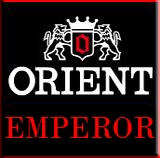-
.
LANCIA LC2 - WINNER 1000KM SPA 1985 - TEAM MARTINI RACING N.5
Drivers: BALDI - WOLLEK
1:18 SPARK (Code:18SB001)
Year/Anno : 1985
Color/Colore : Livrea Martini Rally
My rating /Mio Voto : 93/100
Value for Money/Rapporto qualità prezzo : 85/100
Original price/Prezzo(2015) : €155
Materiale: Resin/Resina
Clicca sul banner in alto per tornare alla Homepage e visionare altri modelli.
Click the banner on the top to return at the Homepage and see the other models of my collection.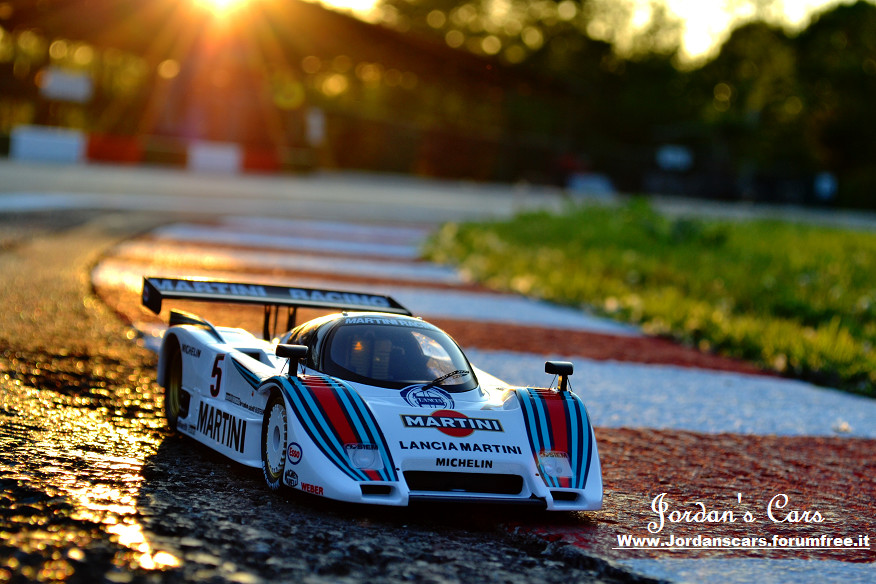
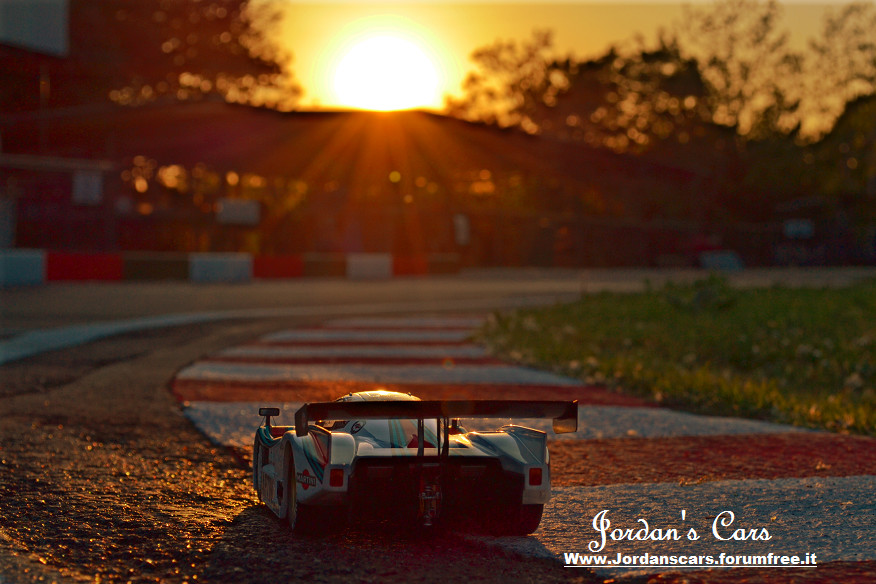
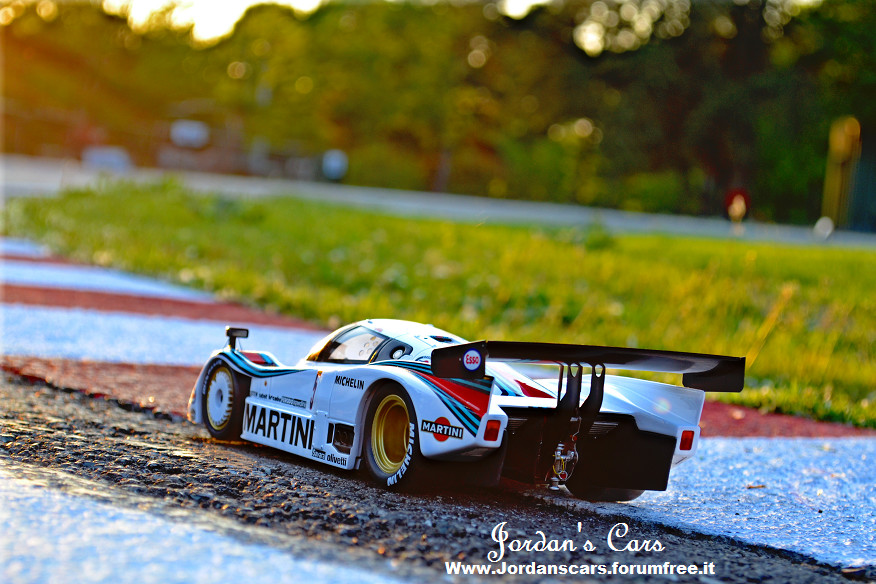
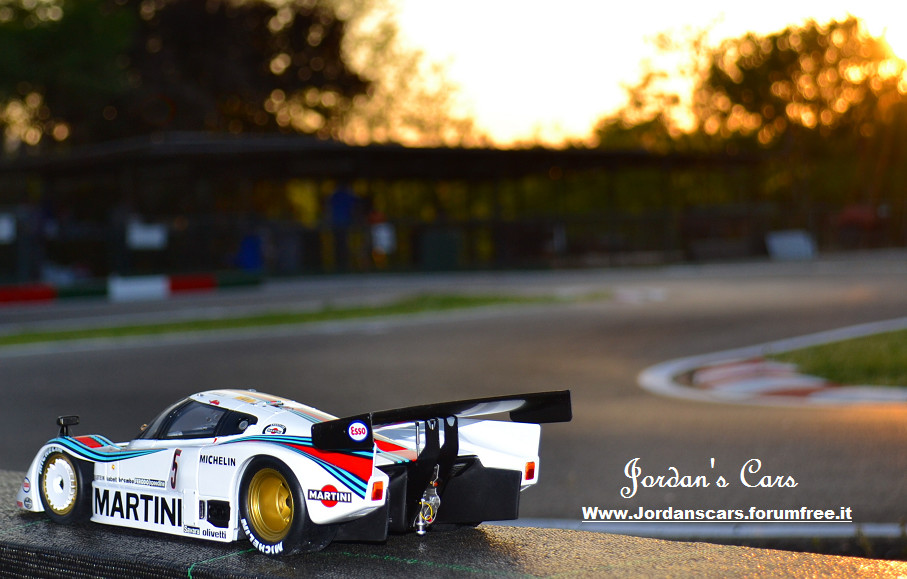
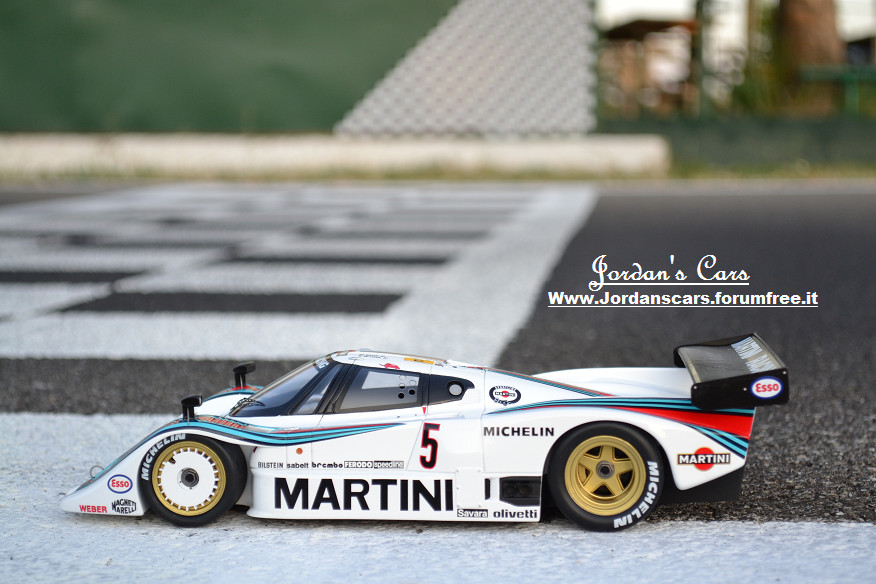
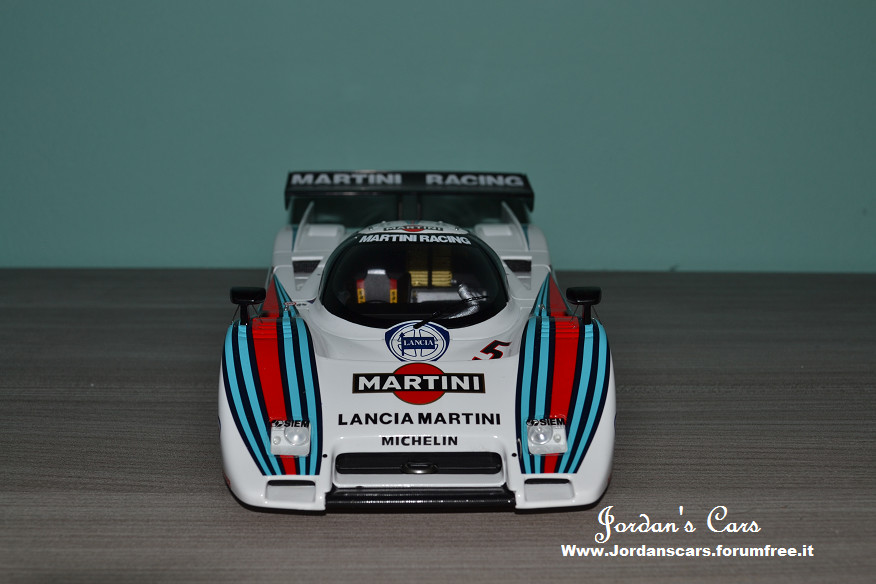
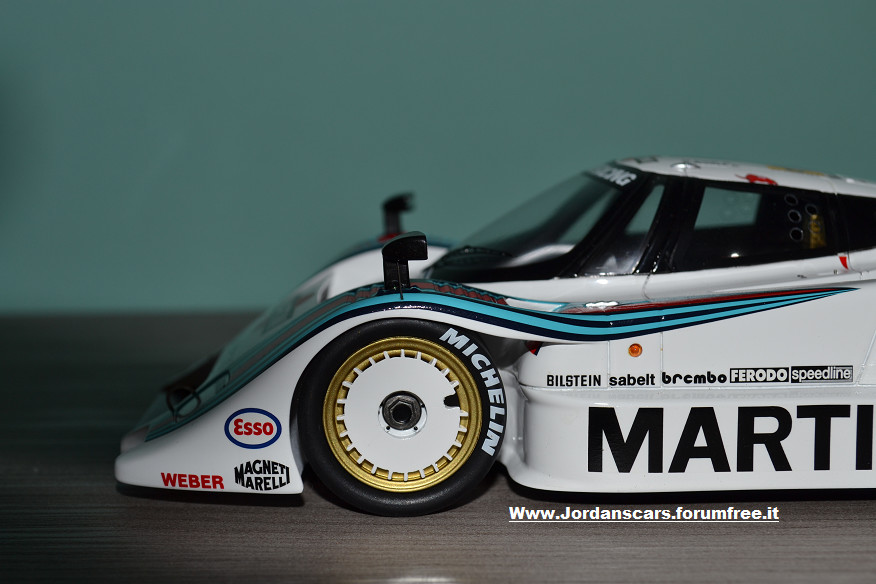
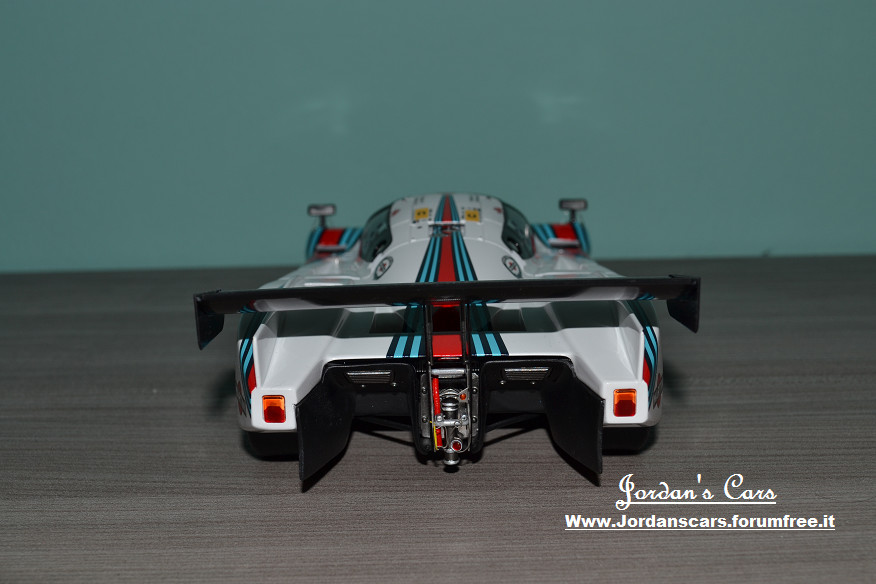
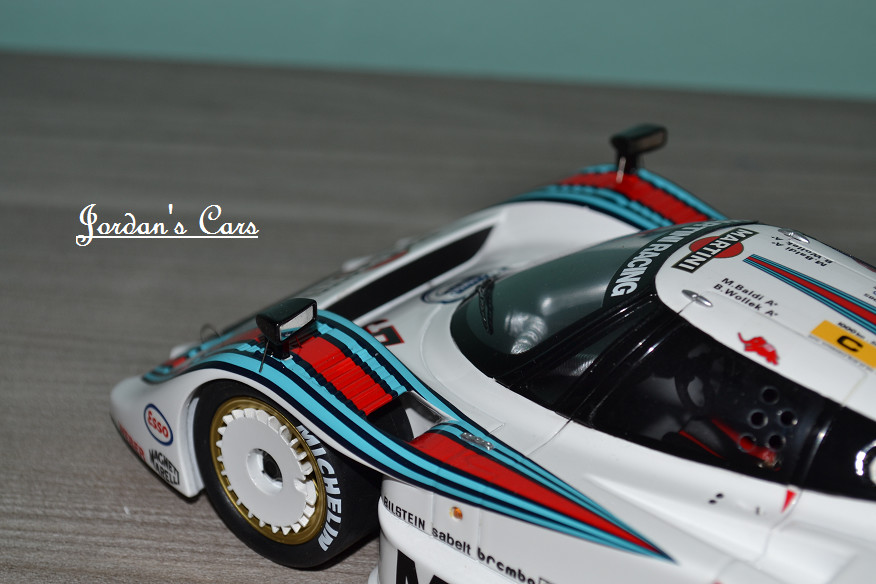
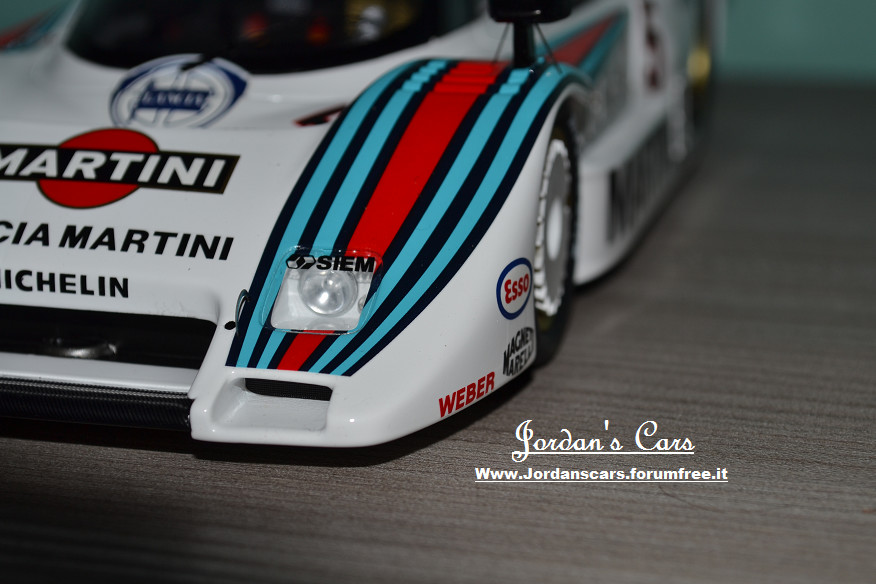
STORIA DELL'AUTO:
La Lancia LC2 è uno sport prototipo costruito dalla Lancia per gareggiare nel Campionato Mondiale Sportprototipi categoria Gruppo C.
Dopo le prestigiose vittorie del mondiale sport 1980 e 1981 ottenute con la Lancia Beta Montecarlo Turbo nel Gruppo 5, la casa di Torino prepara una nuova vettura per competere nel 1982, la LC1 prototipo di Gruppo 6, spinta dallo stesso motore 1,4 litri di cilindrata della Beta Montecarlo. La LC1 non fu però concepita in base al regolamento del Gruppo C, la nuova categoria introdotta dalla FIA nel 1982, ma era una sport aperta non una coupé come la Porsche 956, e col motore era sottodimensionato rispetto a questa. Tale scelta fu dettata dalla mancanza di un motore adatto a competere con la Porsche, che invece aveva già collaudato il suo propulsore sulla 936/81, seppure in configurazione a "consumo libero": gli italiani puntavano sull'estrema leggerezza e sui ridotti consumi.
Trascorsa la stagione di convivenza tra le nuove Gruppo C e le vecchie Gruppo 6 "fino a 2 litri", la LC1 risultò sorpassata, e per contrastare l'egemonia della Porsche la Lancia progettò nel 1983 una nuova sport-prototipo chiusa, la LC2 (sigla di progetto Abarth SE036[1]), corrispondente alla normativa del Gruppo C, e fu scelto un motore V8 Ferrari.
Questo prototipo è mosso da un motore V8 con angolo tra le bancate di 90°, di origine Ferrari ma preparato dalla Abarth, dispone di testate a 4 valvole per cilindro azionate da doppi alberi a camme, la cilindrata è inizialmente di 2.599 cm³ nella specifica utilizzata nel campionato mondiale 1983 e prime prove del campionato 1984, poi incrementata a 3.014 cm³ nell'evoluzione disponibile a partire dalla 1000km di Monza 1984, è sovralimentato da due turbocompressori KKK, in gara la potenza massima era contenuta in circa 680 CV, in quanto il regolamento di Gruppo C imponeva la formula consumo e oltre tale soglia si sarebbe rischiato di restare senza carburante in pista, mentre per le prove di qualifica o nelle fasi di sorpasso in corsa il pilota poteva aumentare a sua discrezione la pressione dei turbocompressori tramite un overboost regolabile raggiungendo così potenze nell'ordine degli 850-1.000 CV.
Il telaio, progettato e realizzato dalla Dallara, è una monoscocca in alluminio con struttura a nido d'ape, con una carrozzeria in kevlar. Le sospensioni sono di tipo indipendente, hanno uno schema a doppi triangoli sovrapposti. Monta un cambio meccanico a cinque marce e la trazione è posteriore; il peso totale della vettura è di circa 850 kg ma anche qualcosa meno sempre da regolamento.
La carrozzeria della vettura venne studiata in modo tale da ottenere un buon compromesso tra elevata deportanza e massima penetrazione aerodinamica, ciò condizionò la dislocazione di diversi componenti meccanici, come il sistema di raffreddamento del motore posizionato anteriormente sul muso, questo ha permesso di ricavare degli enormi canali Venturi sotto il corpo vettura e anche sotto le pance laterali in grado di generare elevati valori di effetto suolo nonostante la mancanza delle minigonne precedentemente utilizzate dalla LC1 di Gruppo 6 ma vietate dal regolamento di Gruppo C. Altra caratteristica della LC2 sono le carreggiate piuttosto contenute rispetto ad altri prototipi contemporanei: larga solo 180 cm, cioè 20 cm al di sotto del limite di larghezza massima regolamentare, questo per avere una minore sezione frontale e quindi meno resistenza all'avanzamento, una soluzione utile per diminuire i consumi e per raggiungere velocità massime superiori in rettilineo; in seguito tale scelta progettuale fu in parte rivista sulla LC2/84, portando a un aumento delle carreggiate per aumentare la tenuta di strada.
Spesso però la vettura accusava in gara problemi di surriscaldamento, che la penalizzavano poi sotto l'aspetto dell'affidabilità degli organi meccanici.
La Lancia LC2 è stata l'unico prototipo in grado di tener testa alla formidabile Porsche 956/962. Alla guida di questa auto dalla classica livrea dello sponsor Martini Racing, si cimentarono alcune delle migliori giovani promesse dell'Automobilismo italiano come Riccardo Patrese, Michele Alboreto, Alessandro Nannini, Teo Fabi, Pierluigi Martini, Beppe Gabbiani, Mauro Baldi, Paolo Barilla e Piercarlo Ghinzani.
Già alla sua prima apparizione alla 24 Ore di Le Mans 1983 nelle prove si dimostrò veloce quanto la Porsche, ma non altrettanto affidabile dato che dopo 13 ore le Lancia si erano ormai ritirate, la Porsche indisturbata piazzò le sue macchine dalla prima fino alla ottava posizione finale, battendo così il precedente record che apparteneva alla Ferrari.
Nel 1984, la LC2 ebbe la migliore occasione per far bene a Le Mans, assente la squadra ufficiale Porsche in contrasto con gli organizzatori, c'erano invece molte Porsche 956 di squadre private; Lancia partì subito bene in prova con due LC2 in prima fila e in gara nelle prime battute, ma noie meccaniche al cambio la costrinsero ad accontentarsi di una magra ottava piazza finale.
Il 1985 è l'anno in cui la Lancia raccoglie il miglior piazzamento a Le Mans, sesta e settima posizione assoluta; nel 1986 dopo solo due prove di campionato la squadra Lancia annuncia il ritiro dalle competizioni per dedicarsi esclusivamente ai rally, in tutto 3 gare mondiali vinte per l'unica vettura di Gruppo C italiana.
_____________________________________________________
The Lancia LC2 (sometimes referred to as the Lancia-Ferrari) was a series of racing cars built by Italian automobile manufacturer Lancia and powered by engines built by their sister company Ferrari. They were part of Lancia's official factory-backed effort in the World Sportscar Championship from 1983 to 1986, although they continued to be used by privateer teams until 1991. They were also the company's first car meeting the FIA's new Group C regulations for sports prototypes.
More powerful than their primary competition, the Porsche 956s, the LC2s were able to secure multiple pole positions during their three and a half seasons with the factory Martini Racing squad. However, deficiencies in reliability and fuel consumption hampered the LC2s' efforts for race wins against the Porsches. LC2s earned three race victories over their lifetimes in the hands of Italian drivers Teo Fabi, Riccardo Patrese, Alessandro Nannini, and Mauro Baldi, as well as German Hans Heyer and Frenchman Bob Wollek.
In 1982, the new Group C regulations were introduced to the World Championship. This rule set required teams to use coupé-style cars that had to be able to meet a fuel economy standard mandated at 100 kilometres (62.1 mi) for every 60 litres (16 US gal) of fuel.[2] The Lancia LC1, which had been built to the older Group 6 regulations, initially competed in 1982, but had to be replaced in order for Lancia to earn constructors' points in the World Championship, now open to Group C cars only in 1983.[3] Besides the fact that the LC1 had an open-cockpit, the turbocharged straight-four Lancia engine it had used was not capable of achieving the fuel economy necessary in the new Group C regulations, requiring Lancia to also seek a new powerplant.[4] Under the direction of Cesare Fiorio, Lancia began to work on the LC1's replacement.
Lancia lacked a production engine large enough to base a racing engine on, leaving the company to turn to outside sources. Since Lancia were owned by the Fiat Group, they were able to seek the assistance of fellow Fiat company Ferrari. Ferrari allowed Lancia to adapt the new naturally aspirated 3.0 litres (183 cu in) four valve V8 which had been introduced in the Ferrari 308 GTBi QV in 1982.The engine was reduced in capacity to 2.6 litres (159 cu in) and two KKK turbochargers were added to help the engine provide the fuel economy and power necessary. The specific engine displacement was chosen because of the possibility of using the same engine in the North American CART series. The engine was initially connected to a Hewland five-speed manual gearbox, which was replaced by an Abarth-cased unit in 1984.
Design work on the chassis was split between Italian specialist racing car manufacturers Abarth and Dallara, the latter of which built the aluminium monocoque and the kevlar and carbon fibre bodywork in their factory. The LC2 featured a large intake for the radiators in the center of the nose of the car just as the LC1 had, unlike the contemporary Porsche 956s which drew all their air from behind and to the sides of the cockpit. This air was also directed through the side bodywork to feed the intercoolers for the turbochargers.[7] Inlets for the rear brake cooling ducts were also integrated onto the side bodywork of the car, immediately behind the doors. At the rear, a pontoon-style design was adapted to the fenders with the large wing bridging across the pontoons. The rear diffusers exited between the pontoons and underneath the wing.
The LC2s were modified over their lifetime, with a multitude of modifications being made each season to the cars' aerodynamics, including adapting brake duct inlets beneath the headlights. The Ferrari V8 was modified in 1984, bringing the displacement back up to 3.0-litres in an attempt to increase reliability and horsepower while improved engine electronics from Magneti Marelli allowed the larger engine to use the same amount of fuel as the previous version.
In total, seven LC2s were built under the direction of Lancia, while a further two were built for Gianni Mussato without official backing after the program had ended.
After the program had ended, Abarth acquired an LC2 and fitted it with the 3.5-litre Alfa Romeo Tipo 1035 V10 engine from the Alfa Romeo 164 Procar, and developed it under the project name SE047. The SE047 was an early development of the Alfa Romeo SE 048SP project in 1988. The SE047's engine was ultimately not utilized in the later stages of the SE 048SP development.
MODELLI CORRELATI/RELATED MODELS:
LANCIA BETA MONTECARLO 24H LE MANS ---> https://jordanscars.forumfree.it/?t=70969639
Edited by xJORDANx - 20/4/2017, 17:51. -
Alessadro21.
User deleted
Bellissima la Lc2 martini ed ottima riproduzione dalla spark........E mo ci troviamo solo con quell'ovetto della y, che amarezza! . -
.
Lancia fu! Fu Fulvia, Fu Flavia, Fu Delta, Fu Astura, Fu S4, Fu Lc2, Fu Stratos, Fu Aurelia, Fu Beta, Fu Thema.
Amarezza è la giusta parola.. -
.
"Amarezza" è una parola troppo soft!!! .
LANCIA LC2 1000Km SPA'85Spark 1:18 |






